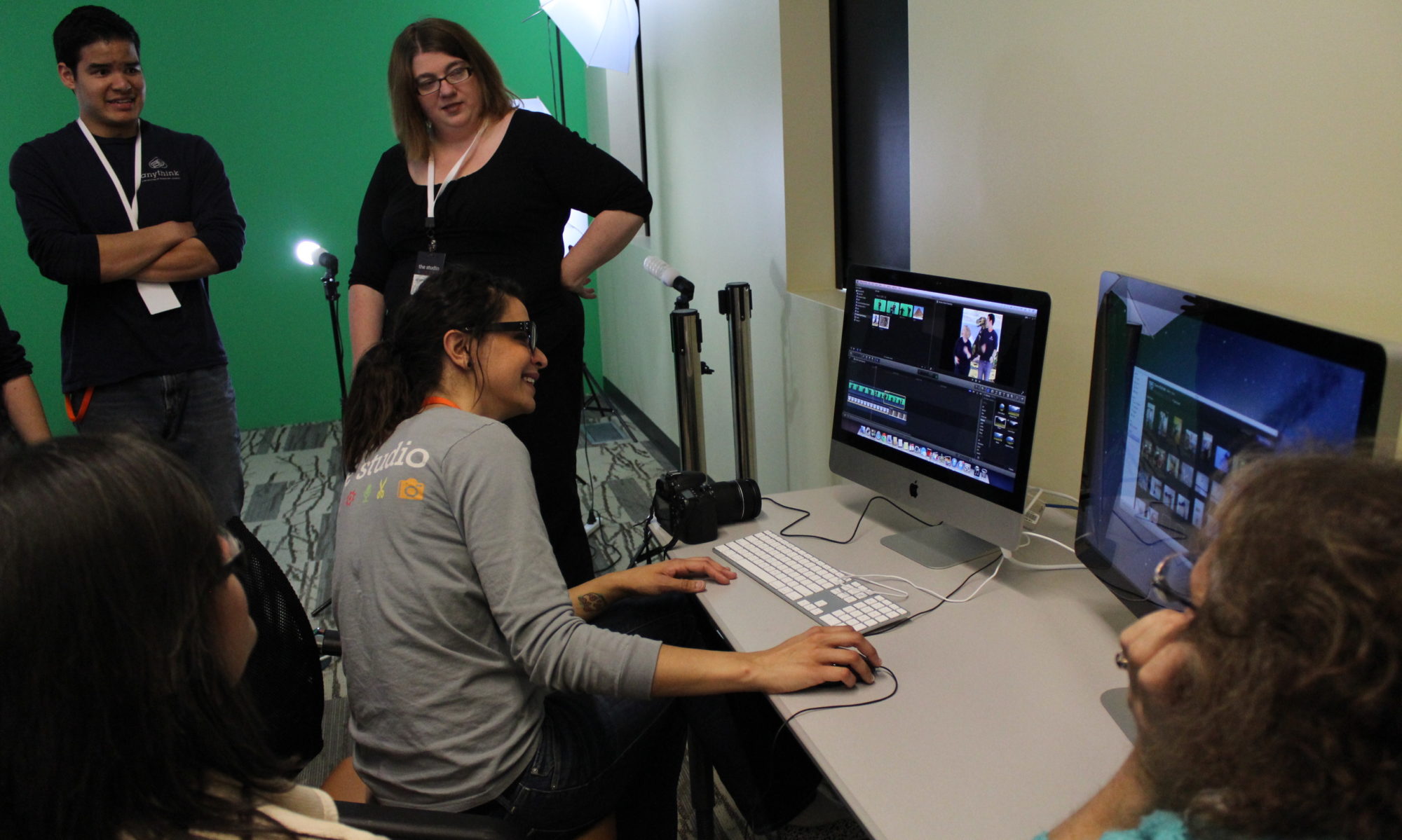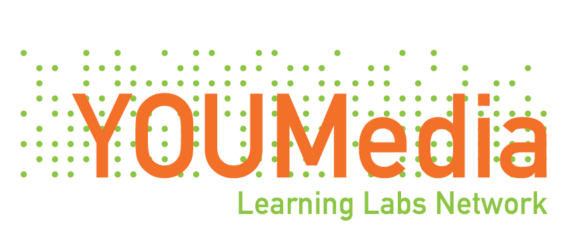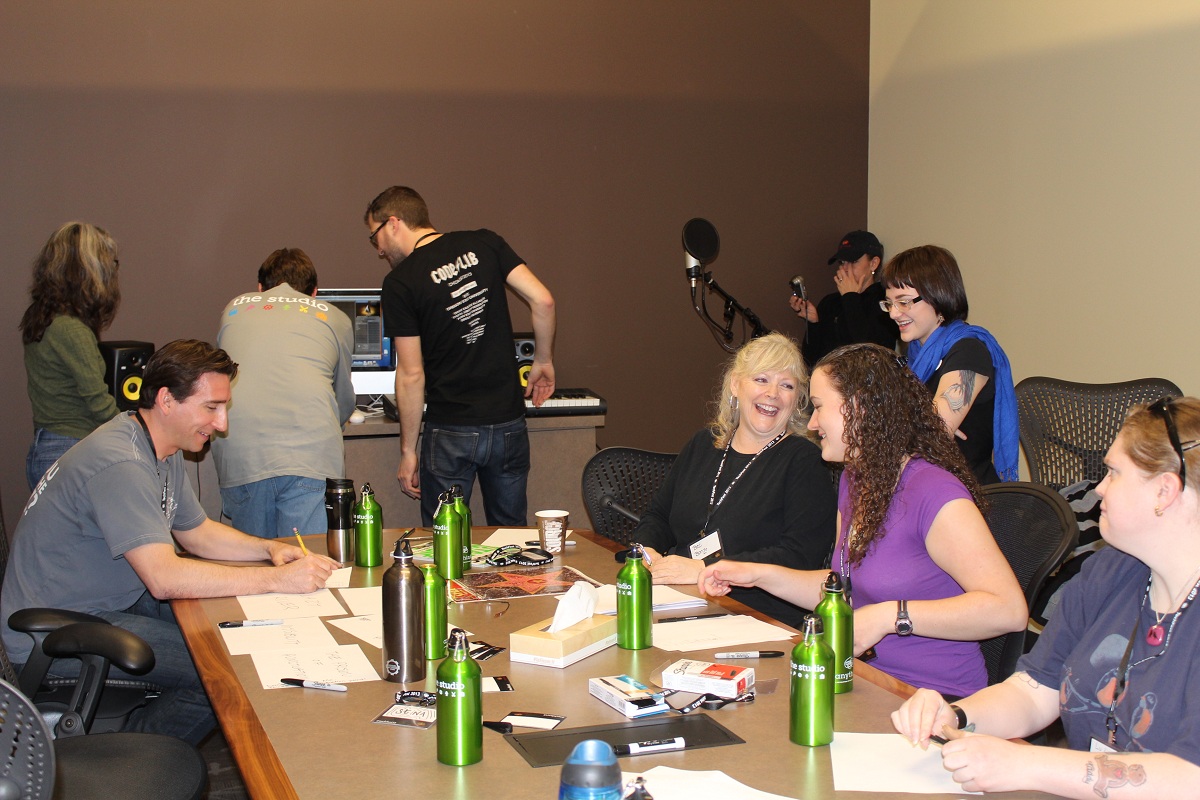By Logan Macdonald + Mo Yang of The Studio @ Anythink Libraries
Changes in staff – from the planning and implementation phase to the post-emergent phase – motivated Anythink to develop a three-tiered approach to training and onboarding management, professional and paraprofessional staff. This approach allows us to maintain consistency and a unified vision regardless of any potential staff changes.
In 2012, Anythink Libraries received an Institute of Museum and Library Services (IMLS) planning grant to create an environment that would allow teens to learn and gain skills based on their interests relevant to school, work and education. Funded by the John D. and Catherine T. MacArthur Foundation, this grant helped build the first iteration of The Studio at Anythink Wright Farms, a digital learning lab designed as a space where teens could hang out, mess around and geek out (HoMaGo) with the latest in digital technology and also connect with industry professionals (artists in residence, or AIRs.)
For 18 months, we built a core team that planned, implemented and ran our Studio spaces. We reached a point, however, when most members of the initial core team had moved on to other projects and opportunities. A need was identified to develop an onboarding plan so that the studio spaces could continue to thrive and be supported regardless of changes in staff. Onboarding needed to include both professional staff who were managing the spaces and paraprofessional staff who were helping customers get started on the equipment.
The onboarding process we developed had three tiers. The first tier involved communicating 18 months worth of knowledge and experience from operating The Studio with the organization’s administrative and management team. The second tier ensured that professional staff understood the concept of the learning labs and how the labs could look and vary in practice; built staff expertise to better support the daily needs of the space; and enabled professional staff to communicate a consistent message about The Studio to other library staff, AIRs and customers. The third tier was on-boarding paraprofessionals, which was very similar to the second tier process, but not as extensive. Their role in relation to the spaces was to have familiarity with the concepts and practice, basic knowledge with tools, and understanding whom to connect customers with in their informal learning.
Communicating 18 months worth of knowledge and data about informal learning, connected learning, program practices, partnerships and other core functions involved multiple meetings with the leadership team to get everyone on the same page. Our thought process here was to create a consistent understanding and message that could in turn be communicated to frontline staff. In order to effectively communicate these topics with the leadership team, a small group was created to review the YOUmedia Hallmarks document and adjust the vocabulary to be more in line with the culture and language of Anythink. This served as the first step in the journey to creating formalized documentation. That documentation would in turn assist in solidifying the onboarding process, as well as in creating an anchor to reinforce the framework of The Studio for the district.
TRAINING
The next area of focus in the onboarding process was to provide staff with adequate training and opportunities for professional development in order to support these non-traditional library spaces.
Our approach to training all staff in this onboarding plan included a mandatory all-staff training day, TechFest, that focused on the concept of The Studio. This training included workshops that model the learning process happening in our Studio spaces and programs with customers. TechFest has been an annual all-staff-training-day since 2010.
The next opportunity for professional development included twice-weekly trainings with AIRs to learn how to use equipment in The Studio. Paraprofessional staff benefited from these trainings and provided feedback like:
”The training was incredibly helpful in order to provide better hospitality to the teens. Having staff be able to troubleshoot technical issues in the recording studio means that we don’t have to turn teens away while we wait for IT to respond to what is often a minor equipment issue. Even more importantly, staff are now able to have meaningful relationship-building interactions with the teens during which we share what we have learned about the software and equipment housed in the studio. Finally, engaging a long-standing Artist in Residence in a different way has strengthened that professional relationship and provided a breath of fresh air to Studio operations.”
These opportunities will continue in the foreseeable future on a bi-weekly schedule. Through the onboarding process we have discovered that staff on all levels of the organization are able to better communicate, advertise and support our customers in many aspects of The Studio.


